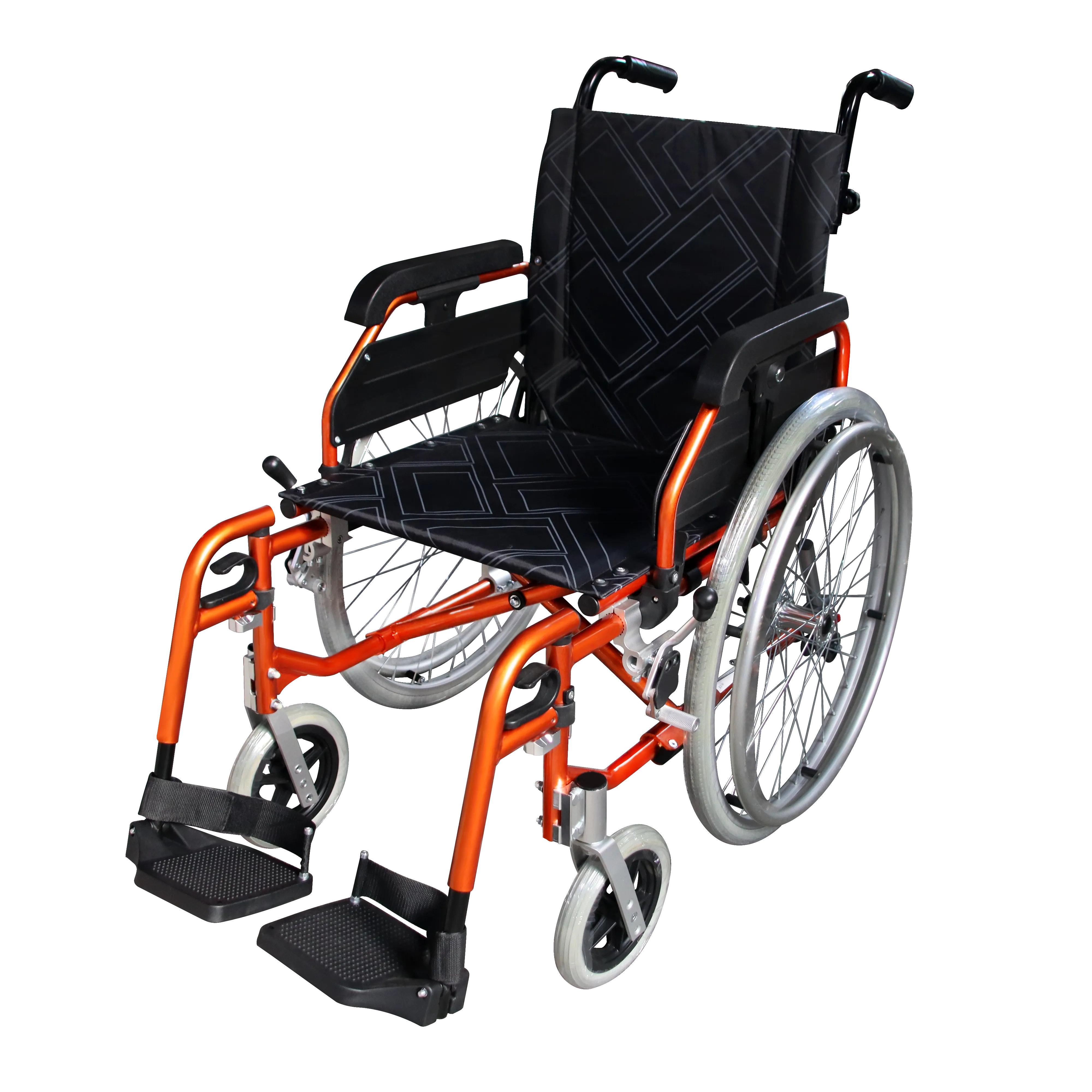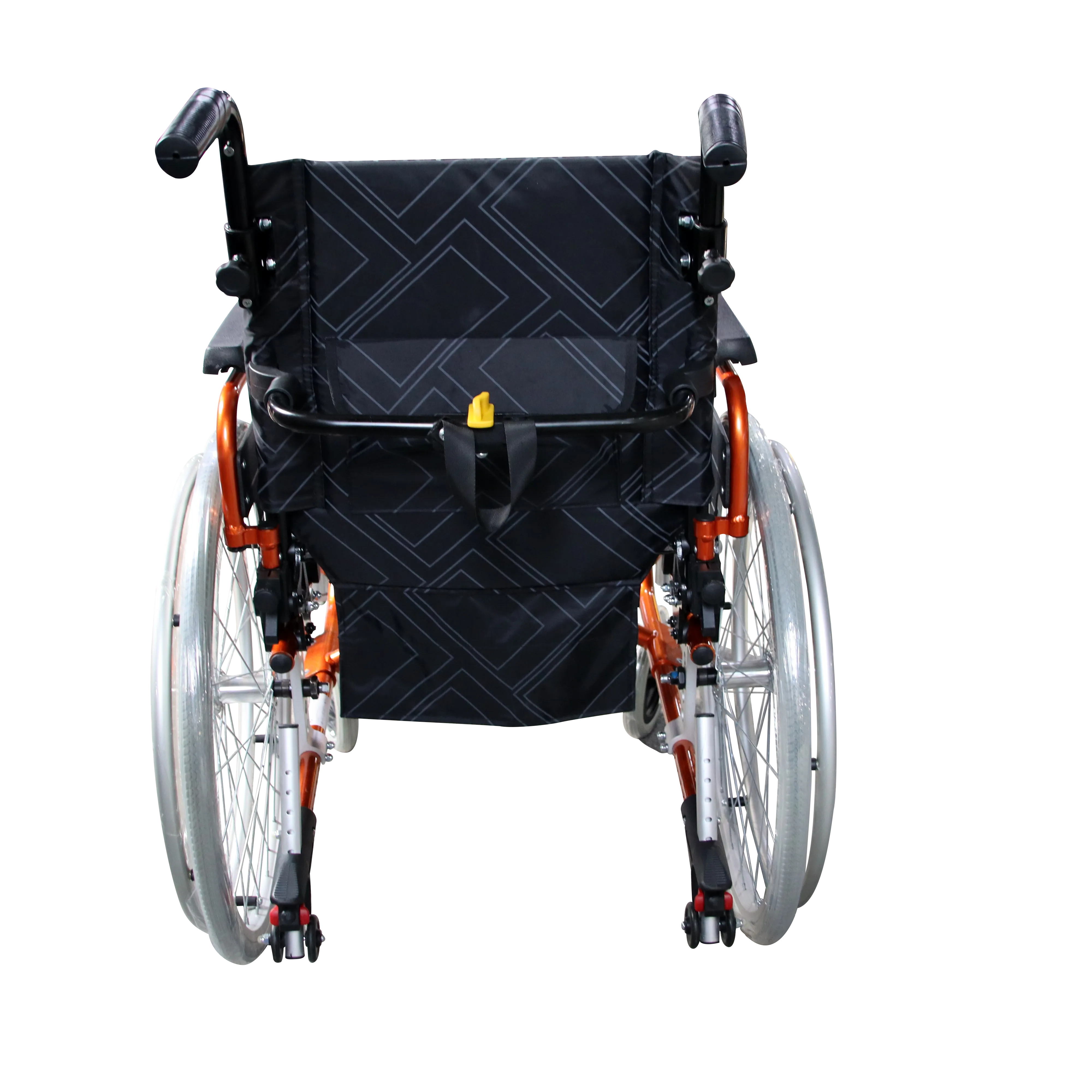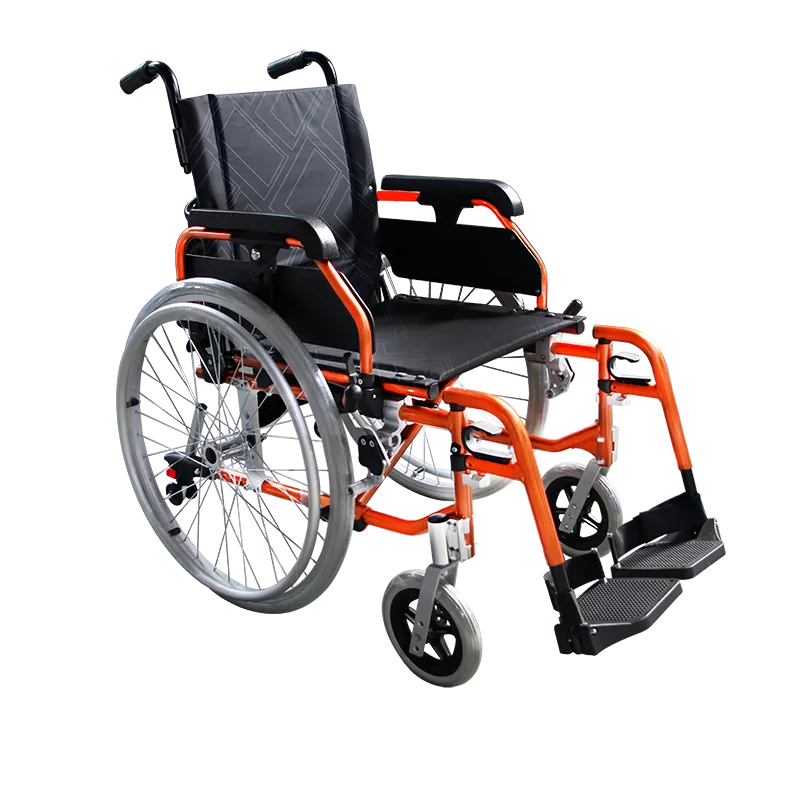In today's rehabilitation assistive device industry, wheelchairs, as one of the core products that help people with limited mobility maintain mobility and independence in life, have evolved into various forms based on different materials, structures and functions. Among them, "aluminum wheel chairs" occupy an important position in the manual wheelchair product system with their advantages of lightness, firmness and corrosion resistance, and have become one of the preferred products for many users and caregivers.
However, despite the wide application of aluminum wheel chairs in the market, the question of "what is an aluminum wheelchair" still lacks a systematic interpretation. Many users still have a vague understanding of the definition, structural characteristics, applicability and difference between aluminum wheel chairs and wheelchairs made of other materials.
This article will deeply analyze the product category of "aluminum wheelchair" from multiple dimensions such as material composition, design characteristics, application type, functional structure, etc., and strive to provide readers with a clear, professional and detailed answer.

What is an aluminum wheelchair?
"Aluminum wheelchair" refers to a wheelchair product whose main frame structure is made of aluminum alloy. Different from traditional steel wheelchairs or new carbon fiber wheelchairs, aluminum wheel chairs are made of aviation-grade aluminum alloy or high-strength industrial aluminum alloy as the main material. The frame is constructed by welding or riveting, and then matched with various accessories to form a complete mobile assistive device.
The core feature of aluminum wheelchair is "light but strong", which makes it have significant advantages in portability, transportation efficiency, and operating comfort. It is especially suitable for users with mild and moderate mobility impairments, the elderly, and patients in the postoperative rehabilitation period.
Material advantages of aluminum wheelchair
1. Physical properties of aluminum alloy
Aluminum alloy is an alloy material with aluminum as the main component and supplemented by zinc, magnesium, copper and other elements. Its key physical properties include:
● Low density: The density of aluminum alloy is about 2.7g/cm³, which is significantly lower than that of steel (about 7.8g/cm³);
● Strong corrosion resistance: The surface oxide layer has natural corrosion resistance and is suitable for outdoor use;
● Good strength-to-weight ratio: Although it is light in weight, it can obtain high mechanical strength after heat treatment;
● Good processability: It is suitable for a variety of manufacturing processes such as extrusion, welding, and riveting.
It is these physical properties that enable the aluminum wheelchair to meet the strength requirements while minimizing the overall weight.
2. Comparison with other materials
| Material | Weight | Strength | Cost | Corrosion resistance | Applicability |
| Aluminum alloy | ★★★ | ★★★ | ★★ | ★★★★ | ★★★★ |
| Carbon steel | ★★ | ★★★★ | ★ | ★ | ★★ |
| Carbon fiber | ★★★★ | ★★★★ | ★★★★ | ★★★★ | ★★ |
| Titanium alloy | ★★★ | ★★★★★ | ★★★★★ | ★★★★★ | ★★ |
It can be seen that the aluminum wheelchair has an advantage in "comprehensive cost performance", especially suitable for large-scale production and daily use.

Structural design features of aluminum wheelchair
The structural design of aluminum wheelchair takes into account multiple dimensions such as lightness, foldability, and ergonomic support, which are mainly reflected in the following aspects:
1. Lightweight frame
The weight of aluminum wheelchair is usually controlled between 10 and 15 kg, which is much lower than the 20 kg of steel wheelchair. This feature greatly improves the convenience of users to carry and carry.
2. Folding structure
Most aluminum wheel chairs have a central cross-folding structure, allowing users to quickly store them when not in use. Its folding mechanism is generally connected by high-strength aluminum rivets, taking into account durability and smooth operation.
3. Ergonomic design
In order to improve comfort, aluminum wheel chairs are generally optimized in the following parts:
● Tension belt system on the back of the seat: adjustable tension belt provides better support for users of different body shapes;
● Flip armrests: easy to transfer from wheelchair to bed or sofa;
● Adjustable footrest angle: adapt to different leg lengths and posture requirements.
4. Quick release system
Some high-end aluminum wheel chairs are equipped with a "quick release rear wheel" structure, allowing users to remove the large wheels within 3 seconds to fit into a small space or to facilitate loading into a car trunk.
Classification and application types of aluminum wheel chairs
1. Classification by drive mode
● Manual aluminum wheelchair: the most common form, relying on the user's hands to push the wheel rim to move;
● Accompanying aluminum wheelchair: no self-driving wheel rim, only with a push handle, suitable for users who need others to push;
● Electric aluminum wheelchair: some high-end models are combined with an electric drive system, and the frame is still made of aluminum alloy.
2. Classification by functional features
● Standard aluminum wheelchair: basic functions, lightweight, suitable for daily travel;
● Portable travel aluminum wheelchair: thinner and lighter, can be stored in the cabin;
● Rehabilitation aluminum wheelchair: equipped with headrest, leg rest, tilt adjustment and other functions, suitable for postoperative recovery;
● Sports aluminum wheelchair: specially designed for wheelchair basketball and racing, with low structure and strong flexibility.
3. Classification by load-bearing capacity
● Ordinary load-bearing type: suitable for users weighing 60kg-100kg;
● Reinforced type: suitable for users weighing more than 100kg, with thickened aluminum frame and wheels.
Functional accessories of aluminum wheelchair
Although the core of the definition of "aluminum wheelchair" is the frame material, the complete wheelchair product also involves a variety of accessories configurations, which together determine the user experience:
1. Cushion and backrest materials
Common cushion materials include high-density sponge, gel layer or memory foam, etc., with nylon mesh or breathable PU leather to reduce discomfort from sitting for a long time.
2. Wheel system
● Rear wheel: generally uses 20 to 24-inch pneumatic tires or solid tires;
● Front wheel: usually 6 to 8-inch rubber universal wheel;
● Rim material: aluminum or plastic alloy to match the weight of the vehicle and rolling efficiency.
3. Braking system
Aluminum wheel chairs are generally equipped with two types of brakes:
● Parking brake: parking and fixing are achieved through the side brake of the wheel rim;
● Handle brake: some accompanying aluminum wheel chairs are equipped with a control brake at the push handle to facilitate downhill control.

Applicable groups and usage scenarios of aluminum wheelchair
1. Applicable groups
● Elderly people: have a high demand for light and easy-to-move products;
● People with limited mobility: users who have suffered a stroke, fracture or are recovering from surgery;
● Temporary injuries: people who need a wheelchair for a short period of time;
● Patients in nursing institutions: those who need nursing staff to assist in pushing;
● Users who travel frequently: those who need travel portability.
2. Usage scenarios
● Home environment: short-distance movement between bedrooms, living rooms, and bathrooms;
● Hospital rehabilitation department: short-distance assistance for patients after surgery;
● Community and nursing homes: meet daily travel needs;
● Public transportation: buses, subways, and airplanes (some models meet boarding standards);
● Traveling: with folding function, suitable for long-distance travel.
Why is aluminum wheelchair so popular?
The aluminum wheelchair can be widely used around the world, not only because of its light material, but also because it combines lightness, durability, structural flexibility, reasonable cost control, and mature manufacturing process.
Compared with steel wheelchairs, aluminum wheel chairs are significantly superior in terms of user handling, accompanying and pushing, and coping with complex terrain. Especially for elderly or female users, the weight advantage of aluminum wheel chairs is not only a matter of convenient operation, but also an important guarantee of safety.
In addition, aluminum alloy materials have strong oxidation resistance. Even if used in high humidity and humid areas, rust and corrosion are less likely to occur, which greatly improves its service life.
Do you offer flexible payment options?
Yes, we offer various payment methods to accommodate our international customers. You can pay for your purchases using bank transfers, credit cards, and other secure payment methods. For bulk orders or long-term partnerships, we are open to negotiating flexible payment terms. Our goal is to make the purchasing process as easy and convenient as possible while ensuring the best value for your money.

